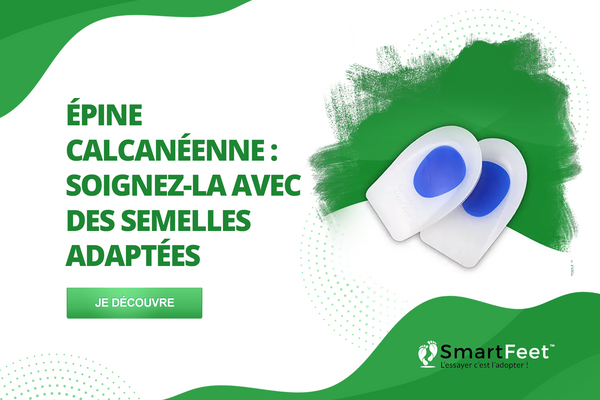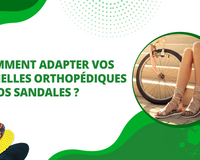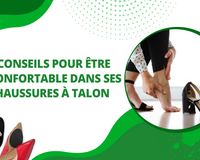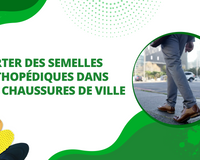The heel spur is a plantar pathology that can cause a lot of pain. This bony growth forms under the heel in response to strong stress on it. It causes severe pain when walking, and requires long-term treatment.
While heel spurs can affect anyone, certain factors predispose some people more than others. Discover the symptoms of this plantar pathology, and how to treat it, with the help of Orthopedic sole.
Heel spur: what is it?
The heel spur takes its name from the shape taken by this bony growth located under the heel. It corresponds to a thickening of the plantar aponeurosis, a rigid fibrous membrane which inserts into the calcaneus, the heel bone, and attaches to the toes. The plantar aponeurosis is the membrane responsible for propulsion of the foot when walking, the one which transmits the force necessary for propulsion from back to front of the moving foot. 👣
The heel spur forms when the membrane of the aponeurosis is overstressed, during a sport that combines jumping and running for example: calcification of the membrane then occurs, which forms an outgrowth at the level of its insertion on the heel. On an x-ray, it looks like a thorn stuck directly into the heel bone, hence the name “heel spur.”
What causes heel spurs?
The causes of heel spurs are numerous:

- Over-stress of the foot joint, and numerous impacts on the heel: athletes such as joggers or basketball players are often subject to the formation of heel spurs following their physical activity.
- Bad shoes, which do not support the arch of the foot enough and do not protect the heel from the impacts of walking, can also lead to a heel spur. “Trendy” but not very comfortable shoes are often the cause: ballet flats, stiletto heels, unsuitable shoes, etc.
- Another risk factor is overweight and obesity, because this excess weight often leads to an imbalance and sagging of the foot which will, in the long term, lead to poor foot support.
👵 For example, it is common to diagnose a heel spur in older people who are a little overweight and who do not choose the right footwear.
What are the symptoms of a heel spur?

It is impossible to confuse the heel spur with another plantar pathology: the pain from the heel spur is so severe that patients often describe the sensation of stepping on a nail as soon as they put their foot on the ground!🔥
This pain is also localized at the heel, where the calcified growth is located.
Sometimes this also results in a feeling of stiffness in the calves and achilles tendon.
How to diagnose a heel spur?

🩺 If you suffer from similar pain, it is essential to go to a doctor because the diagnosis of a heel spur is based on imaging.
An x-ray or ultrasound will be necessary to visualize the spine. The x-ray will allow us to see precisely what the thorn looks like, its length and shape, while the ultrasound will help to locate it precisely.
You can go to your GP first, to be sent to an imaging center or to a specialist, or go directly to a podiatrist to make the diagnosis.
How to treat a heel spur?
❌ Even though the heel spur is an inflammation of the plantar aponeurosis, It is often not recommended to take anti-inflammatories or analgesics to treat the thorn. Indeed, this type of medication may provide immediate relief to the patient, but will not help treat the thorn in the long term.
Treating a heel spur with self-massage
✅ Stretching and self-massage is strongly recommended. to treat a heel spur, as this will promote blood circulation to the aponeurosis and can reduce calcification in the long term.
For stretching, you can stretch before getting out of bed in the morning, straightening your legs with your feet flexed, and staying in this position for a few minutes.
If you want to practice self-massage, you can massage your arches from bottom to top (from heel to toes) with your fingers, focusing on the area of pain then moving up gradually, or by doing the same with a ball of tennis.
Treating a heel spur with orthopedic insoles
Wearing specialized orthopedic half-insoles is strongly recommended to treat a heel spur.
Not only the orthopedic insoles for heel spurs will relieve your pain as soon as you put your foot on the ground, but above all, will reduce the tension placed on the growth, and allow the plantar aponeurosis to relax little by little.
Since the heel spur is very localized at the level of the heel, the insoles to treat it come in the form of gel half insoles or silicone half insoles, designed to offer maximum comfort to your heel.
Wearing half-insoles is strongly recommended when dealing with a heel spur, because although massage relieves the pain at the moment, you will still suffer from sharp pain when walking without insoles, and this can cause poor support. of the foot if you compensate in the forefoot. Ultimately, you risk developing a foot deformity, in addition to your heel spur.
The half-insoles slip into your shoes, and thanks to their flexible and ergonomic material, perfectly fit your heel to protect it from impacts and provide additional shock absorption.
👟By wearing them, you reduce pain points that occur when walking, and allow your overworked heel to rest. In the long term, heel spur insoles can help you reduce your heel spur and pain, and completely heal you.
Where to get orthopedic insoles?

Your podiatrist or specialist doctor can prescribe tailor-made half-insoles or orthopedic insoles to relieve your heel spur.
Costs of custom-made insoles are however high, and their conception lasts several weeks.
The most economical solution and the quickest is to buy your insoles online, on specialized sites like Smartfeet. Smartfeet offers you affordable heel spur half-insole models available in many sizes.
Feel free to browse our range of heel spur insoles to choose the model that suits you.
Heel spur insoles: how much does it cost?
The price of orthopedic insoles varies between €75 and €400 per pair, but it all depends on the materials and technology used:
- A pair of classic orthopedic insoles, made from cork, an inexpensive material, will cost around €70 💸
- So-called functional orthopedic insoles, and made with composite materials of varying elasticity, to provide better support for the arch of the foot, could cost up to €250. 💸 💸
- Finally, high-end orthopedic insoles, where the podiatrist will have to make a tailor-made mold of the patient's feet and use robust and cushioning materials, as may be the case to treat a heel spur, can cost up to €400. 💸 💸 💸
Please note: The Social Security reimbursement rate for orthopedic insoles is 60% of the convention rate. However, the orthopedic insoles must have been ordered on medical prescription.
It should also be noted that the lifespan of a pair of orthopedic insoles is on average 1 to 2 years. However, this differs from one patient to another, depending on weight, gait and posture when walking.
In commerce, pharmacy or specialized online store, the price of a pair of insoles or half-insoles for heel spurs varies between €10 and €25.
The lifespan of these commercially available insoles is shorter than a custom-made pair, but the effectiveness can also be optimal depending on the case.
Conclusion: orthopedic insoles for heel spurs, do they work?
The effectiveness of orthopedic insoles on a heel spur has been proven : not only does this immediately relieve pain, but it also reduces inflammation in the long term thanks to the relaxation provided to the Achilles heel. 👣
Of course, the type of insoles or the duration of wearing insoles may vary from one patient to another, depending on the severity of their heel spur, their age, weight and other variations.
In general, by combining several treatments like the port of Orthopedic sole, self-massage, or some shockwave sessions or ultrasound at a physiotherapist if necessary, pain linked to the heel spur can disappear permanently after several










